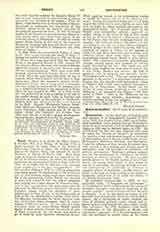

Benoit, MICHEL, b. at Autun (or Dijon), France, October 8, 1715; d. at Peking, October 23, 1774, a Jesuit scientist, for thirty years in the service of Kien Lung, Emperor of China. He studied at Dijon and at St. Sulpice, Paris, and entered the Jesuit Novitiate at Nancy, March 18, 1737. After three years of renewed entreaties he was granted his desire of the Chinese mission, but before his departure completed his astronomical studies at Paris under De l’Isle, de la Caille, and Le Monnier, who attached much importance to his later correspondence. On his arrival at Peking, in 1774 (or 1775), a persecution was raging against the missionaries in the provinces; still, as their scientific ability made them indispensable to the government, Father Benoit was retained at court and entrusted with the task of designing and carrying out a great system of decorative fountains in the royal gardens. He spent many years in this work, for which he evinced rare talent. He built European houses within the enclosure of these gardens and in front of one, in the Italian style of architecture, he constructed a curious water clock. The Manchus characterize the twelve hours of their day (twenty-four hours, European time) by twelve animals of different species. On two sides of a large triangular basin of water Father Benoit placed figures of these animals, through the mouths of each of which successively, for two hours, was forced a jet of water by some ingenious mechanical device. While applying himself to his astronomical studies he taught the emperor the use of the reflecting telescope. Among his numerous works were: (I) A large map of the world (twelve and a half by six and a half feet), to which he added valuable astronomical and geographical details.—(2) A general chart of the Empire and surrounding country, engraved on copper, though at the outset he was as little versed in this art as were his Chinese collaborators, whom he had chosen from the best wood-engravers in the country. The work was done on 104 plates (two feet two inches by one foot two inches, Chinese measure). Sixteen designs of the emperor’s battles had been engraved on copper in France, at the expense of Louis XV, and when these were sent to China, with numerous prints made from them, the emperor immediately desired Father Benoit to print further copies. This required new presses for these delicately wrought French plates, new methods of wetting paper, distributing ink, etc. The result was successful, even rivalling the work done in France, but it was Father Benoit’s last service. He died of apoplexy, ripe in religious and apostolic virtues. The emperor said of him, “This was a good man and generous in his service”; a missionary remarked, on hearing this, that, had the words been said of a Tatar or Chinese, they would have rendered illustrious a long line of descendants. Father Benoit was the author of many letters, preserved in the “Lettres edifiantes”; he translated into Chinese “The Imitation of Christ“, while in the “Memoires sur les Chinois” are many memoirs, descriptions, and sketches ascribed to him, but unsigned.
WILLIAM DEVLIN

